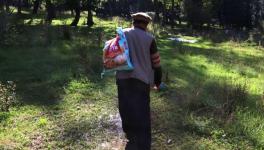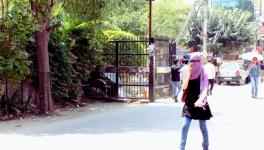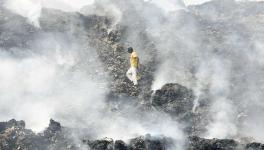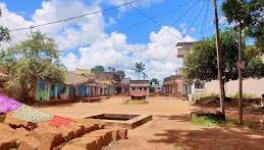Transformation in Leh: Goodbye to Dry Toilets?
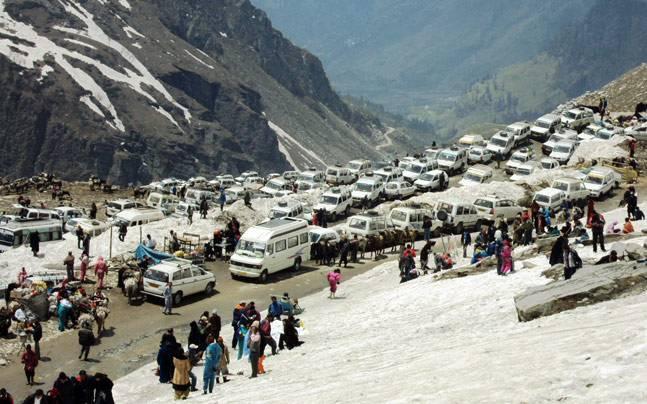
Transformation in Leh, the capital city of Ladakh, is evidently underway. The town has a population of over 20,000, but the officials put the figure around 40,000. The migrant workers are not accounted for in the figure. Nor are the 10,000 personnel of the Indian Army, who utilise all the resources of the region. This forces the civic authorities to plan for a population of 50,000.
The city is metamorphosising fast. It receives more than 300,000 tourists a year. These are both foreign and Indian tourists, and the town is shaped according to their needs and comforts. The town has modern cafés, German bakery, motorcycle outlets, giant guzzlers and what not.
As a result, there are a number of challenges that the city faces from traffic congestion and the shift from agriculture to tourism. One can easily see the agricultural fields getting converted into guest houses and hotels; a few of which now remain open throughout the year (though the night temperature dips to minus 30o Celsius) with the help of central heating facility.
The issues regarding drainage, sanitation and water confront the civic authorities. They have to look for solutions which are sustainable and implementable. The young are shifting from the villages to the city where they work as tourist agents. They leave their parents behind, who are looked after by sprouting palliative and geriatric care initiatives by a large number of CBOs (community-based organisations).
The irreversible shift in toilets?
There is another important shift taking place in the region, which seems to be irreversible – from traditional ‘dry toilets’ to the modern ‘flush toilets’. Is it just because the tourists are not likely to be comfortable with the old dry toilets? Or have the native communities too shifted to the flush toilets?
The Jammu and Kashmir government, utilising funds under Urban Infrastructure Development Scheme for Small and Medium Town (UIDSSMT) through its Public Health Engineering (PHE) department, has invested nearly Rs 100 crore in laying the sewerage pipes in the city, linking it to a sewage treatment plant (STP) which may become operational in a year from now.
It is believed that change in material production changes the social productive relations as well, as well as social behaviour. The switching to flush toilets has increased water consumption in the city. But, the change looks inevitable. Let us look at the three aspects of this change:
1. Dry toilets were excellent, and the human manure would be used in the agricultural fields. This consumed little water, and according to estimates, even 40 litres per capita per day could suffice for an individual’s overall use. Now, with the shift from agriculture to tourism, and reduction in agriculture, the dry toilets are hardly seen as ‘manure production’ for the fields. Hence, the change seems irreversible. This has spiked the water usage to almost double, thus increasing pressure on the PHE Department to fulfil the increased demand.
2. The Ladakhi people living in Leh town earn their livelihood mainly from tourism, with agriculture virtually vanishing. This has eliminated the entire activity of clearing the faecal material, and dumping it into the fields. This is now considered as something ‘bad’ by the younger generation of the region. In such a scenario, the native families are more than keen to get rid of dry toilets.
3. The third major reason for discontinuing dry toilets is linked to sewage connection which every household will be forced to accept. The design of the sewage treatment plant is for 3 million litres per day. This means that a minimum of 30 lakh litres of water and sewage must reach the STP to ensure that it functions to its optimum capacity. The utility will force every household and the hotel industry to link their toilets to the main sewage line. It is only through this linkage that the STP will be able to function normally. Already, there is discussion going on in the local government and administrative circles about how the linkage of the sewage system must be ensured. For them, this utility is more like a business model where though the capital has been invested by the government, the operation costs will be borne by the local residents.
Transformations can take the city and its people both towards better living, as well as can make them face unforeseen surmounting challenges. Previously, the stream of water flowing into the town was used for drinking purposes. Now, with majority wet toilets in the city, the stream is contaminated with mixture of faecal matter from the septic tanks of individuals and hotels. Not just the surface water has become unconsumable, but even the ground water, which is at a shallow level, has got contaminated.
There are over 3,000 borewells owned privately as well as publicly. Water from almost 90% of the borewells has been tested ‘unfit’ for human consumption. It is a strange and unpleasant reality that in the mountains, instead of surface water, a city meets more than 50% of its demand through ground water, and that too is contaminated.
The city has to revisit its sanitation plan, which should focus on both dry and wet toilets. It is quite agreeable that the design of dry toilets requires change which can easily be done to adapt to the modern-day requirement. For example, the commode design can be changed to suit both tourists and the natives. The mixing of sand can be adjusted in the design of the house which can have a mechanical lever attached so that it is easily operated. This is quite possible, and the city’s civic administration and the people must not rule out the possibility of the usage of dry toilets.
The transformation in Leh – which has to happen – must be for the enhancement of the liveability of its citizens, so that they do not follow the trajectory of the urbanisation being witnessed in the country. Liveable Leh will be where once again the stream water flowing into the city can be used for human consumption.
The writer is Former Deputy Mayor, Shimla.
Get the latest reports & analysis with people's perspective on Protests, movements & deep analytical videos, discussions of the current affairs in your Telegram app. Subscribe to NewsClick's Telegram channel & get Real-Time updates on stories, as they get published on our website.










